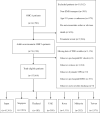The predictive performance of current termination-of-resuscitation rules in patients following out-of-hospital cardiac arrest in Asian countries: A cross-sectional multicentre study
- PMID: 35947598
- PMCID: PMC9365191
- DOI: 10.1371/journal.pone.0270986
The predictive performance of current termination-of-resuscitation rules in patients following out-of-hospital cardiac arrest in Asian countries: A cross-sectional multicentre study
Abstract
Background: Termination-of-resuscitation rules (TORRs) in out-of-hospital cardiac arrest (OHCA) patients have been applied in western countries; in Asia, two TORRs were developed and have not been externally validated widely. We aimed to externally validate the TORRs using the registry of Pan-Asian Resuscitation Outcomes Study (PAROS).
Methods: PAROS enrolled 66,780 OHCA patients in seven Asian countries from 1 January 2009 to 31 December 2012. The American Heart Association-Basic Life Support and AHA-ALS (AHA-BLS), AHA-Advanced Life Support (AHA-ALS), Goto, and Shibahashi TORRs were selected. The diagnostic test characteristics and area under the receiver operating characteristic curve (AUC) were calculated. We further determined the most suitable TORR in Asia and analysed the variable differences between subgroups.
Results: We included 55,064 patients in the final analysis. The sensitivity, specificity, negative predictive value, positive predictive value, and AUC, respectively, for AHA-BLS, AHA-ALS, Goto, Shibashi TORRs were 79.0%, 80.0%, 19.6%, 98.5%, and 0.80; 48.6%, 88.3%, 9.8%, 98.5%, and 0.60; 53.8%, 91.4%, 11.2%, 99.0%, and 0.73; and 35.0%, 94.2%, 8.4%, 99.0%, and 0.65. In countries using the Goto TORR with PPV<99%, OHCA patients were younger, had more males, a higher rate of shockable rhythm, witnessed collapse, pre-hospital defibrillation, and survival to discharge, compared with countries using the Goto TORR with PPV ≥99%.
Conclusions: There was no single TORR fit for all Asian countries. The Goto TORR can be considered the most suitable; however, a high predictive performance with PPV ≥99% was not achieved in three countries using it (Korea, Malaysia, and Taiwan).
Conflict of interest statement
The authors have declared that no competing interests exist.
References
Publication types
MeSH terms
LinkOut - more resources
Full Text Sources
Medical
Miscellaneous


